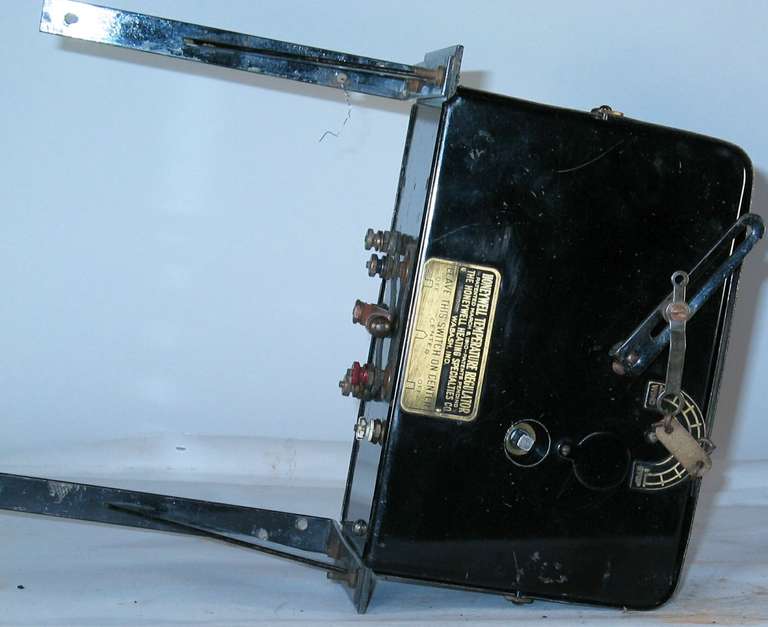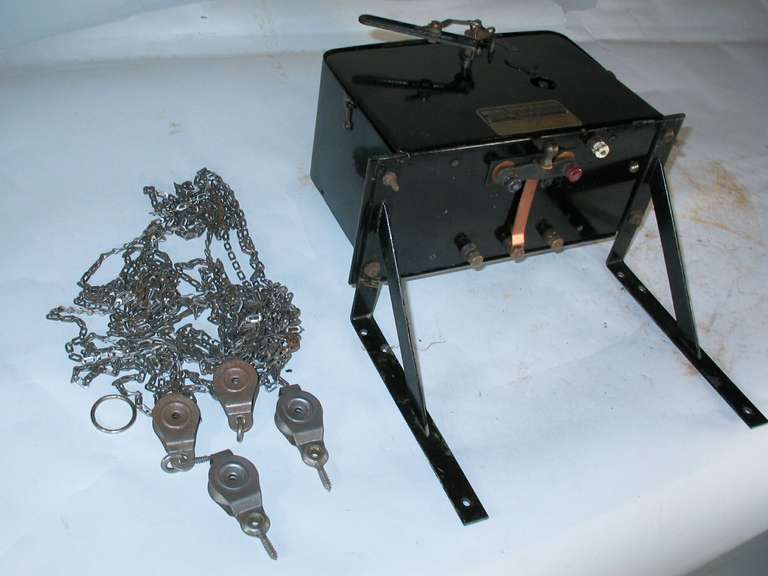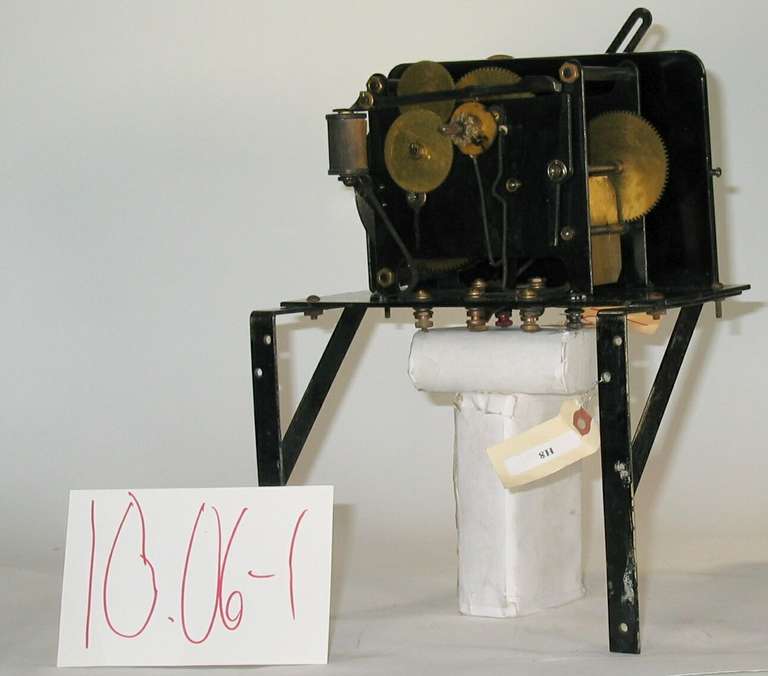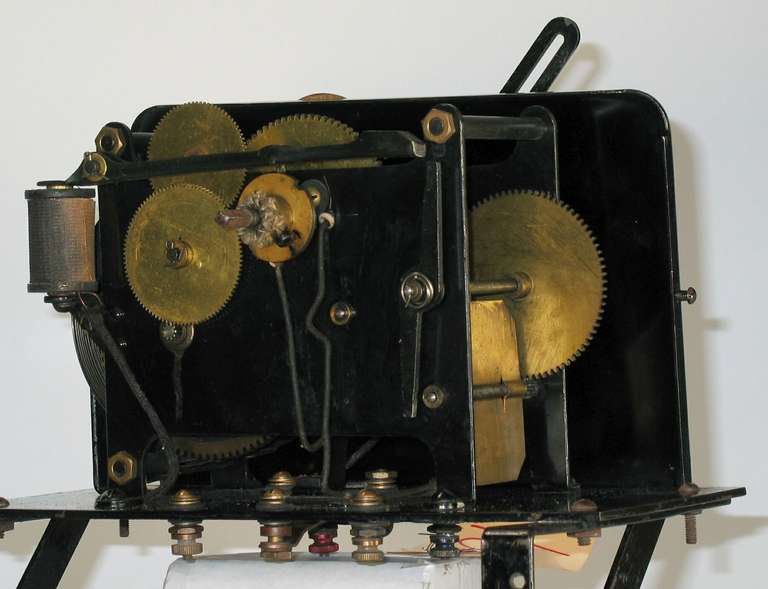10.06-1: Honeywell 1920 Damper Control for Coal and Wood-Fired Furnaces
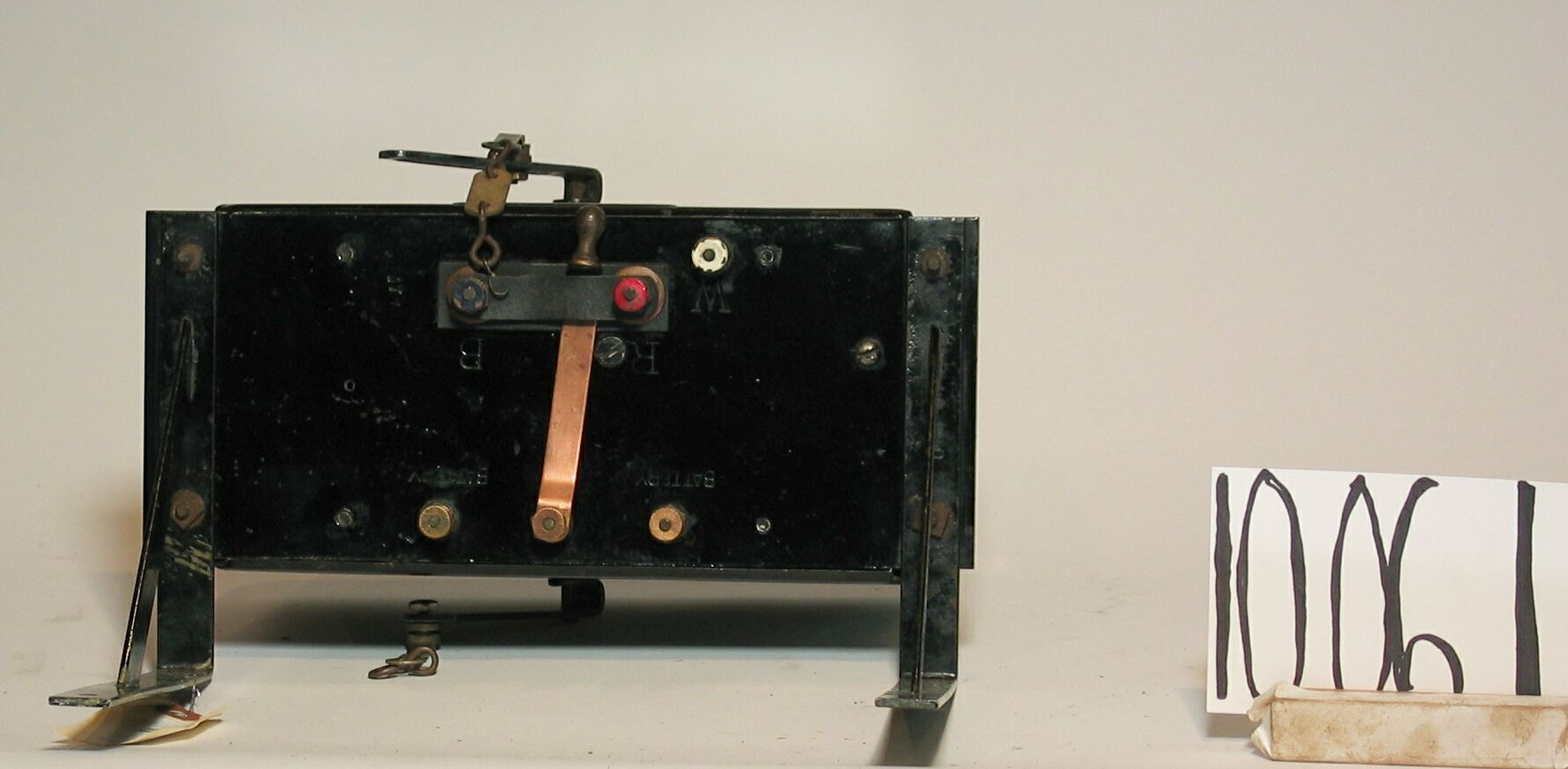
| HHCC Accession No. 2006.101 | HHCC Classification Code: 10.06-1 |
|---|
Description:
With Honeywell’s, battery assisted, spring operated, wind-up damper control motor, for coal and wood-fired furnaces, automatic combustion and temperature control would arrive for some Canadians by the early 1920’s. For the first time the homeowner could position the furnace dampers, regulating combustion rate without leaving the living room’well more or less; Honeywell Heating Specialties Co., Circa 1920.
Group:
10.06 Solid Fuel (Coal and Wood) Burning Equipment - Fuel flow, Ignition and Combustion Controls
Make:
Honeywell
Manufacturer:
Honeywell Heating Specialties Co., Wabash Ind.
Model:
Serial No.:
Size:
11 x 6 x14’h
Weight:
12 lbs.
Circa:
1920
Rating:
Exhibit, education, and research quality, illustrating the engineering and construction of an early spring wound, battery assisted, mechanically automating device for Canadian home heating systems.
Patent Date/Number:
Pat. March 8, 1910
Provenance:
From York County (York Region) Ontario, once a rich agricultural hinterlands, attracting early settlement in the last years of the 18th century. Located on the north slopes of the Oak Ridges Moraine, within 20 miles of Toronto, the County would also attract early ex-urban development, to be come a wealthy market place for the emerging household and consumer technologies of the early and mid 20th century.
This artifact was discovered in the 1950’s in the used stock of T. H. Oliver, Refrigeration and Electric Sales and Service, Aurora, Ontario, an early worker in the field of agricultural, industrial and consumer technology.
It was used in York County (York Region) north of Toronto, where it was subsequently traded-in on the sale of a conversion oil burner for installation in the same furnace.
Type and Design:
Key wound, spring-operated, damper actuator motor for positioning damper control chains, using an electric switch and solenoid actuated brake arm, powered by dry cell battery for starting and stopping the motor - as the home owner desired. Typically mounted in on the baseboard in the living room or hallway, it worked by positioning the furnace fire dampers through a motor-driven arm and chain connected to the furnace.
Construction:
Material:
Special Features:
Handsome metal cabinet in gloss black Handsome brass name plate with logo Original switching Original chain set, with pulleys and hardware Original baseboard mounting brackets
Accessories:
Capacities:
Performance Characteristics:
Operation:
Control and Regulation:
Targeted Market Segment:
Consumer Acceptance:
Merchandising:
It was marketed throughout much of the US and Canada in the first quarter of the 20th century.
Market Price:
Technological Significance:
There can be little doubt that this device represents the first small steps in the automation of household heating systems in Canada, an event that would change life in Canada forever. With key wound, spring-operated, damper actuator motor for positioning damper control chains, the device illustrates dramatically the early first steps in the automation of the household heating system. Starting with the known and the familiar, fire dampers and control chains, the inventor moved to new, novel and innovative means for mechanical automation - without the touch of human hand. The battery assisted operation of the motor, through the use of an electric solenoid to operate a brake arm for starting and stopping the motor, illustrates, too, the early application of battery operated electrical mechanisms, as essentially auxiliary devices to assist what was essentially a mechanical system.
Industrial Significance:
It constitutes an early milestone in the development of automatic heating for homes using solid fuels, wood and coal, prior to the widespread availability of reliable supplies of oil, gas and hydro electrification.
Socio-economic Significance:
The appearance of dry cell batteries in the Canadian household was very much a part of the times. Long before electrification, householders would have their first taste of the benefits of electrically assisted living. For many the familiar #1 dry cell battery would be a marker of the science of the 20th century and the many benefits the new science promised. The dry cell would power the phone, the radio, as well as help automate the heating system, to name a few applications. There would be a curious parallel between the introduction of mechanically automated, battery assisted, home heating systems in Canada in the 1920’s, and the introduction of digital electronically automated, battery assisted, home heating in the 1990’s. Even with fully electrified homes in the latter period, the dry cell was still used to power the Honeywell digital thermostat.
Socio-cultural Significance:
It had instant appeal to a Canadian public in towns and cities across Canada with an increasingly urban desire for comfort and convenience. It set the stage for the rapid growth of the HVACR home heating industry in Canada in the pre-World War II period, by creating public expectations for ever more effective technology for the regulation of fuel flow, combustion and home temperature control.
Donor:
G. Leslie Oliver, The T. H. Oliver HVACR Collection
HHCC Storage Location:
Tracking:
Bibliographic References:
Notes:
The #1 dry cell packaged with the artifact was not discovered with it, although being of the form and kind. Carrying the Northern Electric name, it would be used in telephone service in the 1950.
Related Reports:
CMX04 item H8

